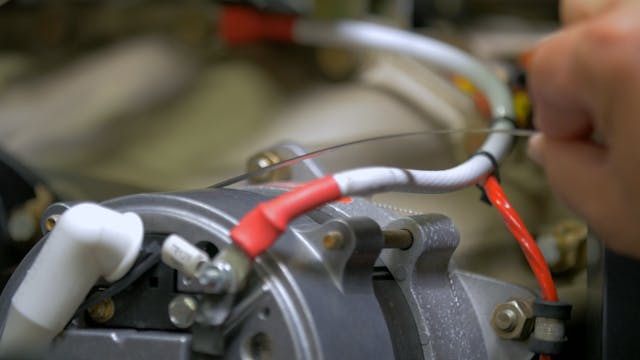Specialized electrical system troubleshooting support for critical applications.
Specialized electrical system troubleshooting support for critical applications.
Blog Article
Top Tips for Effective Electric System Troubleshooting
Fixing electrical systems needs a methodical technique, grounded in a detailed understanding of electrical concepts and safety methods. By familiarizing oneself with circuit elements, utilizing necessary tools, and sticking to an organized examination approach, experts can properly identify and solve problems. The subtleties of effective fixing expand past mere technical understanding; recognizing how to document findings and prioritize security can considerably affect end results. As we explore these vital aspects better, it becomes clear that mastering this process is not just helpful but necessary for success in the area.
Understand the Essentials
Recognizing the essentials of electric systems is necessary for reliable troubleshooting, as a solid foundation enables specialists to identify and fix problems much more efficiently. A comprehensive understanding of electric principles, such as voltage, existing, resistance, and power, is critical in recognizing the origin of problems. Voltage is the electric prospective difference that drives current via a circuit, while resistance opposes the flow of current, influencing the total performance of the system.
Experience with circuit parts, including resistors, capacitors, diodes, and switches over, is likewise extremely important. Each element plays a distinct function in circuit behavior and can impact efficiency when malfunctioning. Furthermore, recognizing series and identical circuit configurations is crucial, as these arrangements influence the circulation of voltage and current within the system.
Specialists need to be conscious of possible threats, such as shock and brief circuits, to implement safe troubleshooting practices. By grasping these foundational ideas, service technicians boost their capacity to perform reliable diagnostics and fixings, ultimately leading to improved efficiency and integrity of electric systems (electrical system troubleshooting).
Gather Necessary Devices
Reliable troubleshooting of electrical systems calls for the right collection of tools to identify and solve concerns properly. Vital tools include a multimeter, which measures voltage, existing, and resistance, enabling for precise evaluations of electric parts.
Additionally, shielded hand devices such as screwdrivers, pliers, and cable strippers are important for safely controling electrical connections. It is likewise advisable to have a circuit tester on hand to confirm the presence of voltage in electrical outlets and cables. For more facility systems, a thermal imaging video camera can help spot overheating parts, indicating potential failures.

Follow a Systematic Strategy
Having gathered the ideal tools, the following action in troubleshooting electric systems is to comply with an organized strategy. A systematic approach guarantees that service technicians can identify mistakes company website efficiently and properly, lessening downtime and preventing unneeded repair services.
Begin by reviewing the system's schematic representations and specs. Recognizing the design and functional parameters will supply context for identifying issues. Next off, isolate the problem area by utilizing a procedure of removal. This involves checking each part methodically, beginning with the more tips here power resource and functioning in the direction of the load.
Use screening equipment, such as multimeters and oscilloscopes, to gather objective data concerning voltage, present, and resistance at numerous points within the system. This empirical evidence will certainly direct your troubleshooting initiatives and aid to verify or eliminate possible sources of failing.
Additionally, take into consideration environmental elements that may affect the system's performance, such as temperature level fluctuations or wetness ingress. A detailed assessment of circuitry, connections, and elements will make sure that all possibilities are accounted for.
Record Your Findings
Comprehensive documents is crucial in the repairing procedure of electric systems. This method not only help in recognizing the origin reason of the issue yet additionally offers as a referral for future repairing efforts.

In addition, maintaining a log of parts changed or repair services done is invaluable. This details supports supply administration and can help evaluate the longevity and dependability of certain elements.
Eventually, the documents procedure ought to be extensive yet succinct, allowing simple access and evaluation - electrical system troubleshooting. By focusing on detailed documents, specialists can produce an important expertise base that not just aids in current troubleshooting yet additionally equips future maintenance check out this site efforts, consequently boosting general system reliability

Prioritize Precaution
Acknowledging the fundamental risks associated with electric systems is essential for making certain safety and security during troubleshooting. Electrical shock, burns, and equipment damage are just a few of the prospective risks that professionals deal with. Prioritizing precaution is not only a lawful obligation yet additionally an ethical imperative that safeguards both the technician and the surrounding environment.
Before starting any troubleshooting job, technicians need to don suitable personal protective tools (PPE), including insulated gloves, security glasses, and flame-resistant garments. Making certain that the workspace is dry and devoid of mess can considerably decrease the danger of mishaps. It is necessary to de-energize circuits prior to starting any type of work, verifying that they are not live through the use of a multimeter or voltage tester.
Developing clear interaction methods with group members is also essential; this ensures that every person understands possible dangers and the condition of the electrical system being worked with. Having an emergency situation action plan in place can confirm vital in the event of an incident. By focusing on precaution, technicians can properly alleviate risks and cultivate a much safer workplace.
Verdict
Effective electrical system repairing relies on an extensive understanding of basic concepts and a methodical technique. Focusing on safety steps makes certain the health of individuals involved and the stability of the electric system.
Report this page